How Has History Affected the People of Western Europe?
Who Are the People of Western Europe?, What Is Western Europe Like Today?
The laws and governments in Europe came from ancient Greece and Rome. Democracy (dih-mahk-ruh-see) began in Greece. In a democracy, the people rule themselves.
At first, kings ruled Rome. About 700 B.C., Rome became a republic. In a republic, people choose their leaders. Romans voted for members of the Senate. The Roman Senate passed laws. These laws protected citizen's rights and property. The Romans ruled most of Europe until about A.D. 500.
In the Middle Ages A.D. 500 to about A.D. 1500), the Germans added their laws and customs to Roman laws. They started kingdoms all over Europe. Many of these kingdoms became Christian. Christianity spread across Europe. During times of war and danger, many people found strength in their religion.
In 771, Charlemagne (shahr-luh-mayn) of France became an important king in Europe. He ruled an area called the Holy Roman Empire. After his death, the empire broke down into smaller kingdoms. These kingdoms became the modern countries of Germany, Italy, France, and Spain.
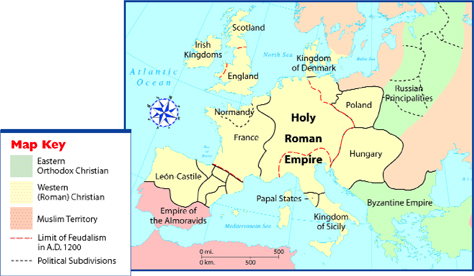 Map of Western and Southern Europe and the Three Main Religions, A.D. 1200
Map of Western and Southern Europe and the Three Main Religions, A.D. 1200
During the Middle Ages, a new political system called feudalism began in Europe. Feudalism (fyood-ul-iz-um) is a system in which people, called serfs, worked and fought for a local lord. In return, serfs used the lord's land for crops. The lord also protected the serfs. Most people were serfs.
By the 1400s, feudalism began to end. A new way of life began. Cities grew. These new cities became important trade centers. Europe began trading with other parts of the world. Italy was a major trade center. Countries traded not only goods but also ideas.
By the end of the Middle Ages, a very creative time began in Europe. New ideas spread across Europe. The people became very interested in art. They wanted education. Science became important. This special time is called the Renaissance (ren-uh-sahns). Renaissance is French for “rebirth.” It lasted from about 1350 through the 1500s.
Painters and sculptors created great works of art. The printing press was invented. Now there were more books for people to read. People wanted freedom. They also wanted to have a say in their own government.
By the 1700s, people in Western Europe did have more freedom. In England, the king's power was limited. America and France both fought wars for independence.
In the mid-1700s, there was another big change in the way people lived. It was a time of new inventions. This period is called the Industrial Revolution. New machines made goods faster and cheaper. Western Europe had plenty of raw materials. They also had cheap labor. The Industrial Revolution changed the way people lived. Their strong economy made Western Europe very powerful.
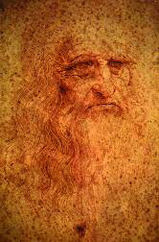 Self-portrait by Leonardo da Vinci, a great artist and inventor from the Renaissance period.
Self-portrait by Leonardo da Vinci, a great artist and inventor from the Renaissance period.
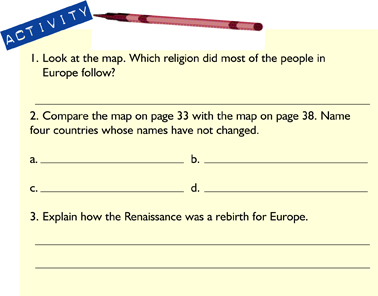
Who Are the People of Western Europe?
Think about your way of life in the place where you live. Is it like other communities you have visited? How is it different? How do you think life where you live might be different from life in London or Madrid? Why do you think people with the same values and culture live together? Let's look at the people of Western Europe.
Study the map of Western Europe below. It has many countries. Some countries make up regions. A region might have the same weather, history, or landforms.
For example, Scandinavia is a region in Northern Europe. It is not a country. It is made up of Denmark, Sweden, Norway, Finland and Iceland.
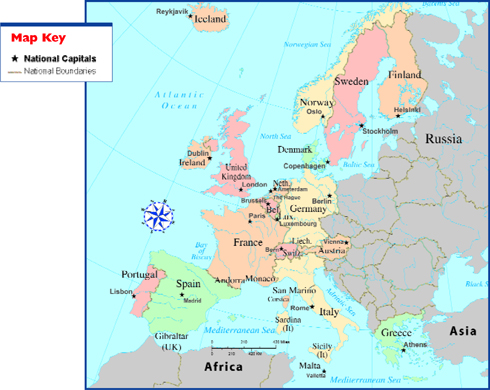 Political Map of Western Europe
Political Map of Western Europe
Each country in Europe has its special culture. Countries are famous for their own special holidays, food, and traditions. Italy, for example, has wonderful pastas and pizzas. The French make great breads and cheeses. And if you want some of the best chocolate in the world, go to Switzerland. Foods from Western Europe are famous all over the world.
The people of Western Europe celebrate many holidays. They have religious and national holidays. Some are the same holidays we have in the United States. Great Britain has Mother's Day. In France, they call Mother's Day Fête des Mères.
The world celebrates very similar holidays. But there are some very special festivals! Each year in one Spanish city, the people have a huge tomato fight. In Pamplona, Spain, people run through the streets chased by bulls. Then there is a very unique festival near Gloucestershire, England. People chase a round of cheese down a hill!
Other holidays are more traditional. In Sweden during midsummer, the sun shines 24 hours a day. The Swedes celebrate Midsummer's Eve with dancing, maypoles, and music. In France, they celebrate Bastille Day. It is similar to the Fourth of July in America.
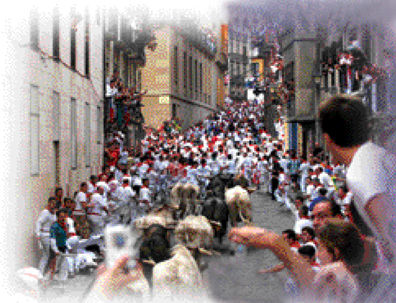 “Running of the bulls” in Pamplona, Spain.
“Running of the bulls” in Pamplona, Spain.
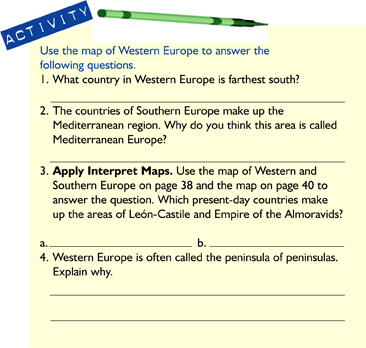
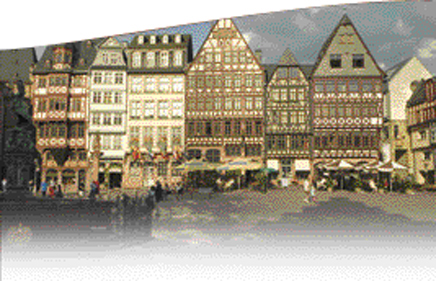 Frankfurt, Germany
Frankfurt, Germany
What Is Western Europe Like Today?
Mountains divide France and Spain. The North Sea separates the United Kingdom from the rest of the continent. Look again at the physical map of Europe on map 35. Locate the rivers and mountains. In early times, these rivers and mountains divided the people of Europe.
Today, it is very easy for the people of Western Europe to move from place to place. Imagine eating lunch in London. Then just three hours later, you can have dinner in Paris. Europeans travel quickly by boat, airplanes, and high-speed trains.
This easy travel shapes the culture of Western Europe. People can travel from place to place. Goods can get from one country to another very quickly. When people travel, so do their ideas. The movement of people, ideas, and goods has helped make Western Europe very successful.
But it was not always as easy to travel in Europe. And parts of Europe did not have a high standard of living. The standard of living is how well people are living. It is determined by the amount of goods and services they can afford.
A United Europe. For hundreds of years, Western Europe has been a center for world trade. But many countries looked after just their own interests. They blocked trade to protect their own industries.
For hundreds of years, countries fought one another. In the 1900s, there were two terrible World Wars. European leaders decided that Europe needed to change.
In the 1950s, several countries got together. They decided to work together to improve their economies. The countries formed an organization called the European Union, or the EU.
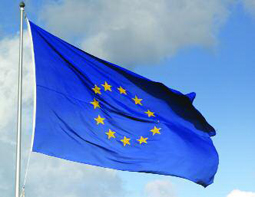 The EU flag
The EU flag
Free Trade. In some ways, the EU is like the United States. Countries in the EU have free trade with one another. Free trade removes all barriers so that goods flow freely among countries. Most use the same money. This makes it easier to buy and sell goods. Workers can work in other EU countries without work permits or visas.
The EU works to improve the standard of living for all its members. It works to increase trade and create jobs. As the economies of the countries improve, so do the living standards for all the people.
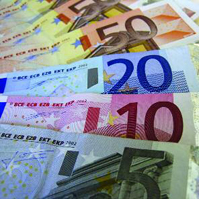 EU currency
EU currency
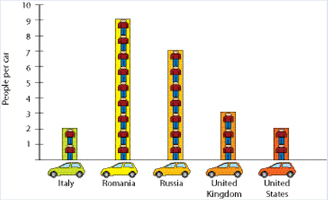 Building Skills: People Per Car
Building Skills: People Per Car
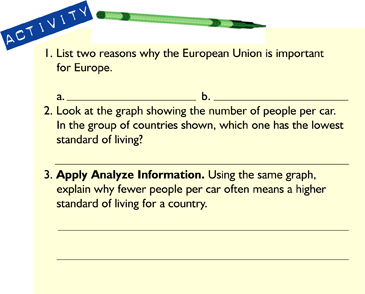
Additional topics
- How Has History Affected the People of Eastern Europe Russia? - Who Are the People of Eastern Europe?, What Is Eastern Europe Like Today?
- What Is The Geography of Europe and Russia? - What Is the Climate Like?, How Is the Land in Europe Used?
- Other Free Encyclopedias
History Reference: Ancient History & World HistoryThe Eastern Hemisphere - Europe and Russia



